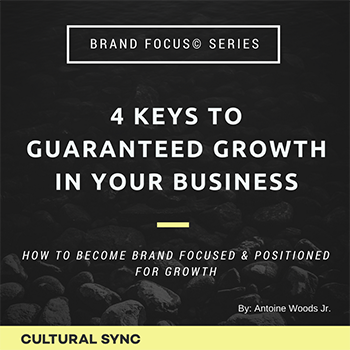If posed with the question, “why did you become an entrepreneur?”, what would be your response? I’m sure that 99.99% of all replies would not include the term failure. No one starts a business with the goal of failing in mind, but that’s often the outcome. Statistically speaking, there is more than a 50% chance that any newly formed business will be closed within five years of being established. Yes, you read that right.. fifty percent!! And that number catapults to 90% for technology businesses.
As one might assume, the top reason for this occurrence is due to the lack of cash flow, but the second reason, however, may not be as expected. The second most common contributor to early business failure is an insufficient need for their product or service, which I find myself questioning. Is there truly a lack of need for their offering or did the leaders of the business do a poor job of defining and then communicating the brand?
Entrepreneurs often fail to realize that it’s impossible to effectively and efficiently communicate and sale what has not been defined. We frequently find ourselves so overwhelmed with running every aspect of the business that we do not invest time into defining the core of the business and begin operating on assumptions, and assumptions ultimately lead to failure.
The Importance of Brand Focus
Regardless of the type of business you’re leading, a key to obtaining and maintaining success requires a focus on these four (4) areas of your brand – Brand Definition, Customer Definition, Messaging Definition, and Communication Definition.
Brand Definition
The first phase of becoming Brand Focused is defining your “Brand Core”. Your brand core consists of a – Vision statement, Mission statement, and Core Values. All 3 of these elements combine to create the soul of your business.
Your vision statement declares where your business is headed and what that looks like when it has arrived. E.g – “Our vision is delivering happiness to customers, employees, and vendors. – Zappos”
Your mission statement defines what your business is, why it exists, and its reason for being. It’s basically an everyday extension of your vision statement. E.g – “To provide the best customer service possible. Deliver “WOW” through service. – Zappos”
Your core values are fundamental beliefs and guiding principles of what your business stands for. E.g – “Integrity, Accountability, Positivity, Open-Mindedness”
Consumers now want more than just products and services, they look to support brands that have meaning and stand for something. Your core will define the foundation of your brand and play the role of moral anchor, guiding the behavior, decisions, and actions of those within your business.
Customer Definition
The second phase of becoming Brand Focused is defining who your product or service is suited for. This may seem like a no-brainer, but surprisingly a large number of businesses take the “cast a wide net” approach to deciding who to target. If you find yourself saying “Our product is for everyone.” or “The more people we target, the more business we’ll do.” you need to stop and rethink your processes. Phrases like these are a springboard for wasted resources, and the first step toward closing your doors.
Without knowing your target audience, or if an audience even exists for what you’re offering, how can you realistically expect your business to succeed? You must invest time to fully define and understand who your target is – age, gender, ethnicity, geographic location, education level, social class, etc.
I know this seems like a lot, but these are just a few of the factors that would benefit you to define. There are a vast array of resources available to help you with this task, you just have to devote the time to find which best fits your business.
Messaging Definition
The third phase of becoming Brand Focused is defining your brand message. We all must come to the realization that we live in a “me” world. Today’s consumer instantly wants to know, “How does this benefit me?”, “How will this make me feel?”, “How will this make me look?”, “How much will this cost me?” and so on. And with now being exposed to up to 10,000 brand messages per day, consumers only have a few seconds to give their attention to you, so don’t get cute. Do not overcomplicate things. Creating clear, concise and simplistic messaging should be a priority for you and your team.
Take time to invest in the process of defining and clarifying who you are, what you do, and how you provide value to your customers. The fact that you defined your brand core and target customer in the previous phases, will better equip you to create effective and attention-grabbing messaging.
Communication Definition
The fourth and final phase of becoming Brand Focused is defining which marketing mediums are best suited for efficiently reaching your defined customer. I understand it’s easy to use your own communicative preferences as a guide to set your strategy, but that’s often a bad approach. You must take the information you’ve gathered about your target customer and think of how they receive and consume information.
Are they using social media, streaming music services, television, podcasts, search engines, etc.? Wherever your customers are, that’s where you need to be. And always keep in mind that regardless of the platform, having a clear and consistent message is paramount to building your brand. Never use one message for one platform and a different message on another. Keep the same message, but adapt it fit requirements or restrictions of the platform.
Once you have thought through and defined all of these elements, you must champion will be better equipped to enter into the activation phase and focus on execution in the real world. A well thought out and clear strategy will be the ultimate foundation for your brand’s success.
